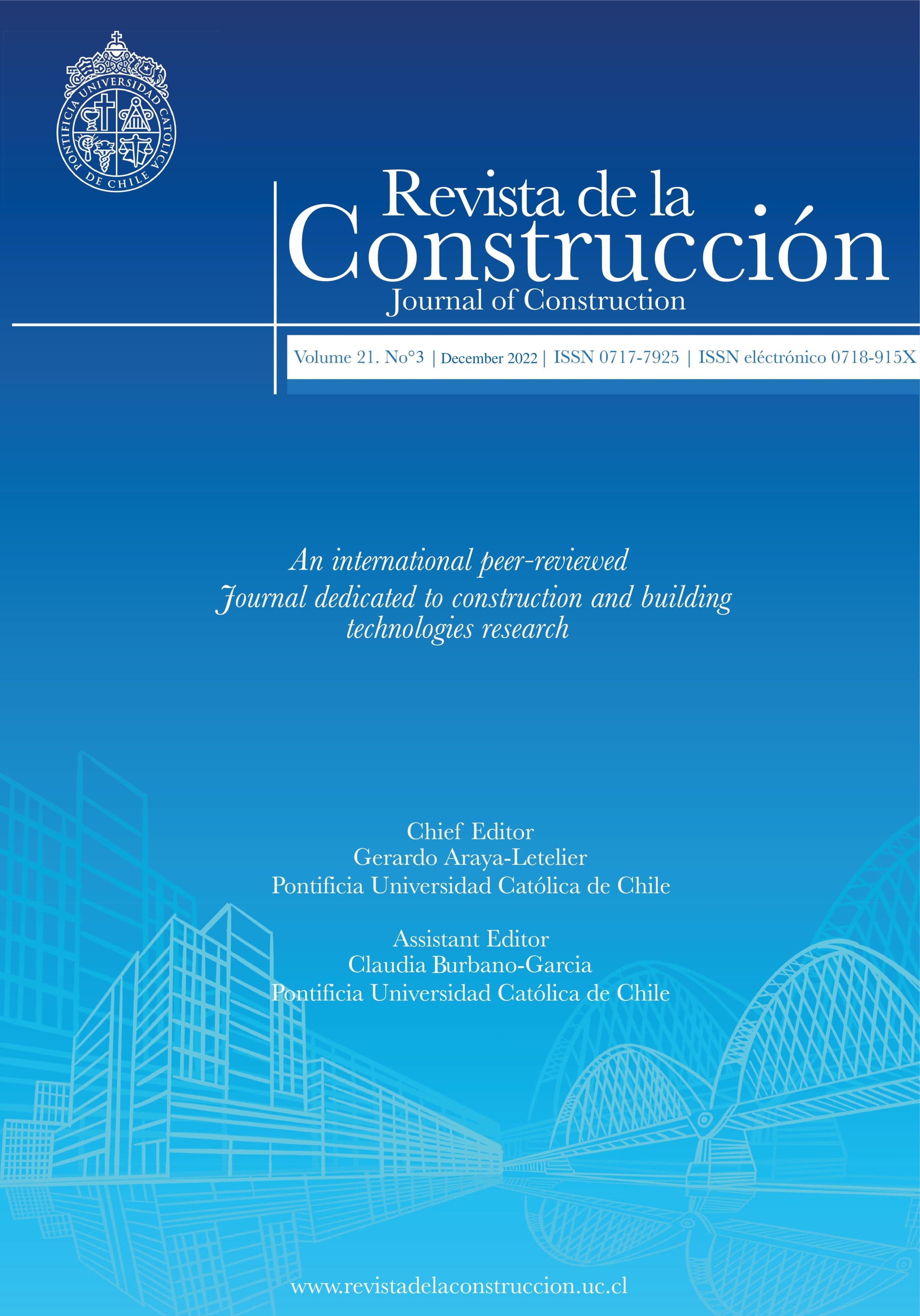Comprehensive evaluation of transverse joint spacing in jointed plain concrete pavement
DOI:
https://doi.org/10.7764/RDLC.21.3.618Keywords:
Transverse joint spacing, JPCP, concrete pavement, economic analysis, pavement design.Abstract
Transverse joint spacing is one of the fundamental input parameters in structural design of jointed plain concrete pavement (JPCP). It has to be determined considering many factors to produce a well-performing and cost-effective JPCP. In this study, a comprehensive evaluation of transverse joint spacing in JPCP was carried out based on the followings: (1) guidelines based on previous studies, the Federal Highway Administration and the American Concrete Pavement Association recommendations were summarized; (2) empirical and mechanistic-empirical (M-E) pavement design methodologies were reviewed; (3) current state highway agency practices in USA were surveyed as part of this study and the survey results were documented; (4) effects of joint spacing on JPCP performance were evaluated based on field observations; and (5) lastly, an economic analysis was performed to evaluate effects of joint spacing on life-cycle costs. This study demonstrated that a joint spacing between 15-18 ft (4.6-5.5 m) seems to be provide a safe zone for both performance and cost effectiveness.
Downloads
References
AASHTO. (1993). AASHTO guide for design of pavement structures. Washington, D.C., USA.
AASHTO. (1998). Supplement to the AASHTO guide for design of pavement structures. Washington, D.C., USA.
ACPA. (2019). Web Application “Max joint spacing”. http://apps.acpa.org/applibrary/MaxJointSpacing/ (Accessed:01.09.2021).
American Concrete Institute (ACI). (2002). Guide for design of jointed concrete pavements for streets and local roads (ACI 325.12R-02). Report by ACI Committee 325. American Concrete Institute. Farmington Hills, MI.
Beckemeyer, C. A., Khazanovich, L., & Yu, H. T. (2002). Determining amount of built-in curling in jointed plain concrete pavement. Transportation Re-search Record Journal of the Transportation Research Board 1809(1):85-92.
Darman, R. (1992). Guidelines and discount rates for benefit-cost analysis of federal programs (OMB Circular No. A-94 Revised). Office of Management and Budget, Washington, DC.
Darter, M. I., Von Quintus, H., Jiang, Y. J., Owusu-Antwi, E. B., & Killingsworth, B. M. (1997). Catalogue of recommended pavement design features (Final Report, NCHRP Project 1-32). Transportation Research Board, Washington, DC.
Darter, M. I., Mallela, J., Larson, G. E., Rao, C., Titus-Glover, L., & Khazanovich, L. (2006). Use of mechanistic-empirical procedures for design of long-life concrete pavements. Proceedings of the international conference on long-life concrete pavements, Chicago, Illinois.
FHWA. (1990). Concrete pavement joints (Technical Advisory T 5040.30). Federal Highway Administration, Washington, DC. Retrieved from: https://www.fhwa.dot.gov/pavement/t504030.cfm (Accessed:01.09.2021).
FHWA. (1998). Life-cycle cost analysis in pavement design (Technical Bulletin). Federal Highway Administration, Washington, DC. Retrieved from: (https://www.fhwa.dot.gov/infrastructure/asstmgmt/013017.pdf) (Accessed:01.09.2021).
FHWA. (2015). The long-term pavement performance program. Federal Highway Administration Washington, DC.
FHWA. (2019). Concrete pavement joints. Federal Highway Administration Washington, DC.
Grosek, J., Zuzulova, A., & Brezina, I. (2019). Effectiveness of dowels in concrete pavement. Materials (Basel, Switzerland), 12(10), 1669. doi:10.3390/ma12101669.
NCHRP. (1994). Support under Portland cement concrete pavements (NCHRP Project 1-30 report). University of Illinois, Urbana-Champaign, IL, USA.
NCHRP. (2004). Guide for mechanistic–empirical design of new and rehabilitated pavement structures. final report (NCHRP Project 1–37A). TRB, Na-tional Research Council, Washington, D.C. Retrieved from: http://trb.org/mepdg/guide.htm (Accessed:01.09.2021).
NCHRP. (2011). Sensitivity evaluation of MEPDG performance prediction. Final report, (NCHRP Project 1-47). TRB, National Research Council, Washington, D.C.
TxDOT. (2012). Optimizing concrete pavement type selection based on aggregate availability (Research project 0-6681) Texas Department of Transportation.
Downloads
Published
How to Cite
Issue
Section
License
Copyright (c) 2022 Orhan Kaya

This work is licensed under a Creative Commons Attribution-NonCommercial-NoDerivatives 4.0 International License.





